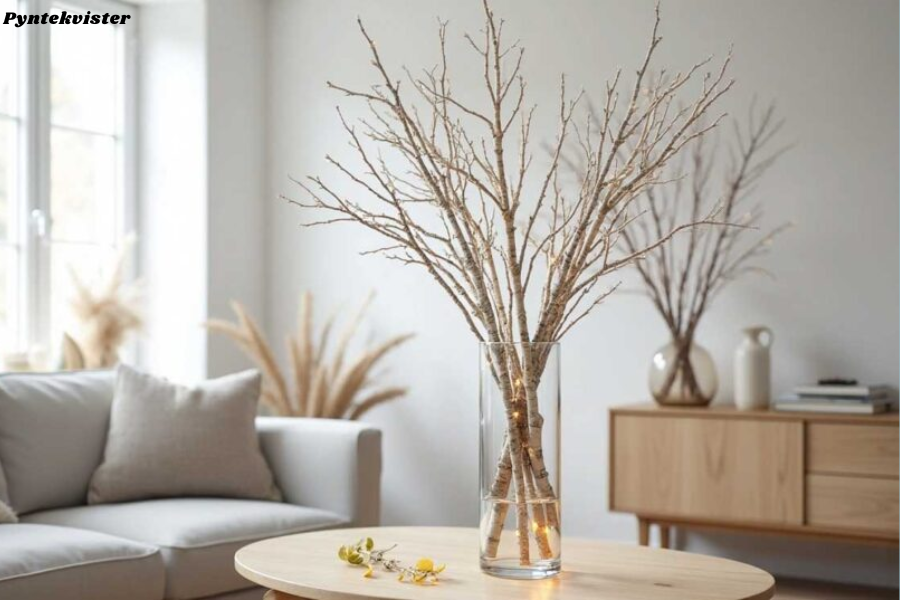Pyntekvister—a charming Norwegian word that translates to “decorative twigs“—has quietly made its way into the hearts and homes of decor lovers across the globe. These elegant branches are much more than just a rustic accessory; they represent a deeper connection to nature, a nod to Nordic simplicity, and a celebration of sustainable living. Whether displayed in a tall vase, woven into a wreath, or styled on a mantel, pyntekvister bring a quiet, grounding presence into any space.
In this guide, we’ll explore the origins of pyntekvister, their role in Scandinavian design, and how to creatively use them in different parts of your home. You’ll also discover tips for styling, seasonal ideas, care instructions, and their deeper symbolic meaning. Let’s dive into the natural world of pyntekvister and uncover how these humble branches can transform your home into a serene and beautiful sanctuary.
The Nordic Connection: How Pyntekvister Reflect Scandinavian Heritage
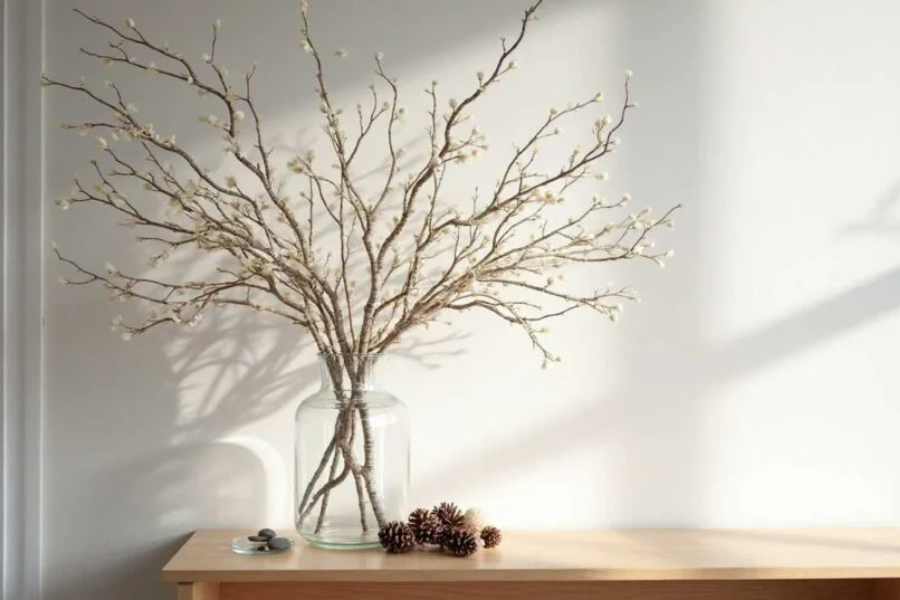
Scandinavia has long embraced minimalism, harmony, and nature in its design philosophies. Pyntekvister are a perfect example of this aesthetic. In traditional Nordic homes, people would gather twigs and branches from local forests, especially during the long winters when fresh flowers were hard to find. These twigs were arranged in vases or bundled into wreaths, bringing the beauty of the outdoors inside.
The practice wasn’t just about decoration—it was about living in tune with the seasons, honoring the land, and creating comfort in simplicity. Even today, pyntekvister continue to represent the essence of Scandinavian living: calm, thoughtful, and connected to nature.
Different Types of Pyntekvister for Every Style and Season
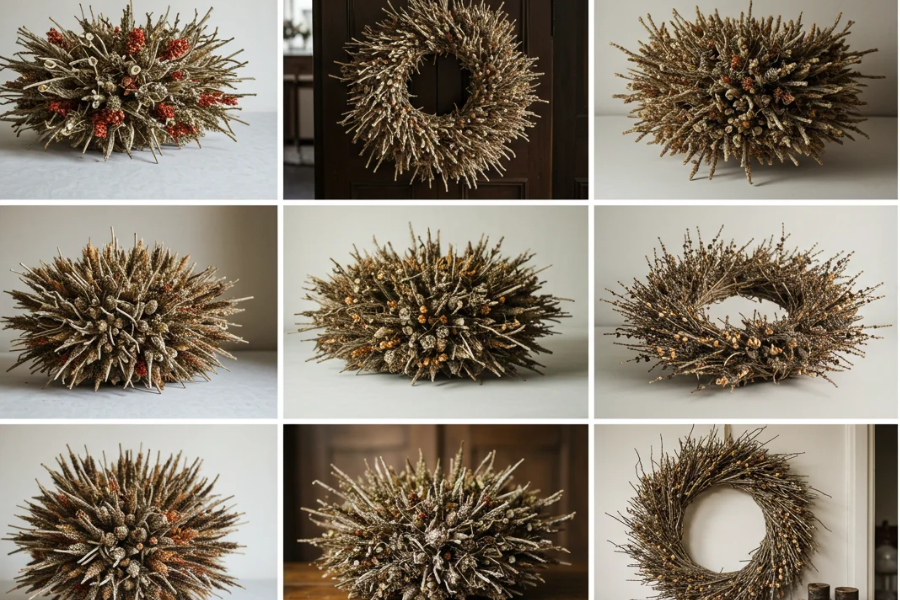
| Type of Pyntekvister | Description |
|---|---|
| Birch Twigs | Known for their light tone and fine texture, ideal for soft, minimalist interiors. |
| Willow Branches | Flexible and flowing, perfect for creating dynamic shapes and contemporary styling. |
| Cherry Blossom Twigs | Adds a romantic, seasonal touch with delicate pink or white blossoms—great for spring decor. |
| Eucalyptus Branches | Fragrant and stylish, adds a modern-green vibe and refreshing aroma. |
| Painted or Gilded Twigs | Painted gold, silver, or black for dramatic, festive, or artistic effects. |
Creative Ways to Use Pyntekvister in Your Home Decor
Pyntekvister are all about creativity and expression. Whether you’re decorating for a holiday, a special event, or simply refreshing your everyday decor, there are countless ways to use these natural elements.
1. Centerpieces and Table Decor
Arrange a few pyntekvister in a rustic ceramic vase or glass jar as a table centerpiece. Add fairy lights or small hanging ornaments for seasonal flair.
2. Wall Art and Installations
Use branches to create DIY wall hangings or minimalist sculptures. Try arranging them in a geometric pattern or tying them together with twine for a boho look.
3. Seasonal Wreaths
Wrap pyntekvister into wreaths with greenery, berries, or dried flowers for beautiful door decor that changes with the seasons.
4. Entryway Statements
Placing tall pyntekvister in a floor vase near the entrance adds a warm, welcoming vibe to your home.
5. Shelf Styling and Bookcase Accents
Add height and texture to bookshelves or mantels by placing small bundles of pyntekvister alongside candles, books, or framed photos.
Why Choose Pyntekvister? The Benefits of Natural, Decorative Twigs in Your Home
If you’re looking to enrich your living space with meaningful, eco-friendly, and stylish decor, pyntekvister offer several advantages that go far beyond aesthetics.
1. Eco-Conscious and Sustainable
Unlike plastic decorations, pyntekvister are 100% biodegradable and can often be sourced locally. They support an eco-conscious lifestyle by reducing reliance on artificial materials and promoting natural reuse.
2. Cost-Effective Home Styling
A bundle of branches from your own backyard or nearby park can be turned into a beautiful piece of decor—making pyntekvister one of the most budget-friendly options for elevating your interiors.
3. Visually Calming and Grounding
Natural textures like wood and bark have been proven to reduce stress and anxiety. The gentle lines and neutral tones of pyntekvister offer a serene visual experience that complements wellness-focused spaces.
4. Versatile and Customizable
You can leave them bare for a minimalist look or decorate them with lights, fabric, or seasonal ornaments. This flexibility makes pyntekvister ideal for DIY enthusiasts and stylists alike.
5. Symbolic and Spiritual
For many, pyntekvister represent growth, rebirth, and connection with nature. In Scandinavian tradition, they carry the symbolism of endurance through the harsh seasons and the promise of spring renewal.
DIY Decor Projects with Pyntekvister – Make Your Own Natural Art
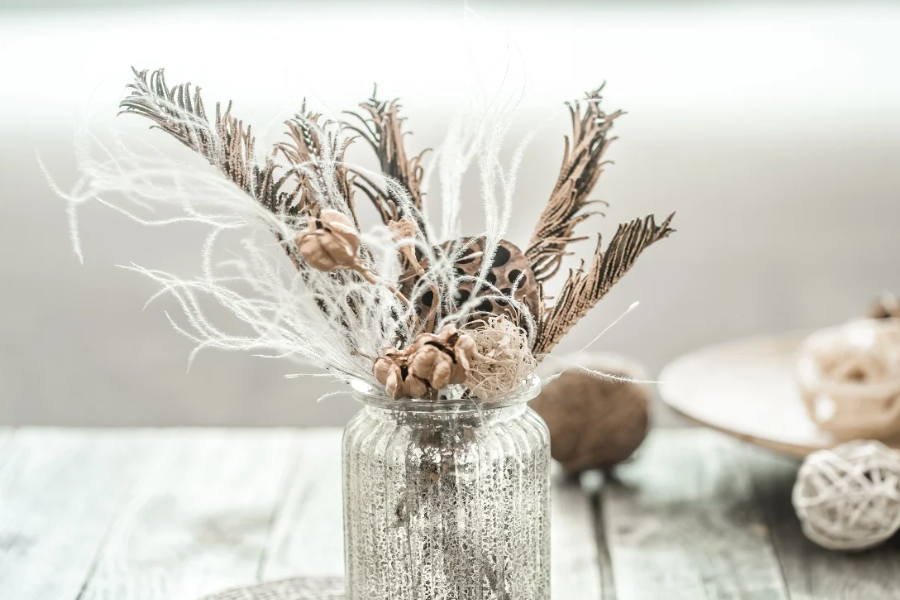
Want to get hands-on? Here are a few creative DIY ideas using pyntekvister that are fun, affordable, and totally customizable:
1. Twinkling Branch Light Display
- Materials: Pyntekvister, LED string lights, tall vase or wall hooks
- Wrap the lights around the branches and place in a corner or wall
- Perfect for bedrooms, reading nooks, or evening gatherings
2. Hanging Photo Tree
- Tie photos with rustic string or mini clips onto pyntekvister
- Display on your wall or stand in a decorative pot for a memory tree
- Ideal for birthdays, anniversaries, or cozy corners
3. Seasonal Door Garland
- Bundle twigs and attach seasonal elements like dried citrus (winter), tiny flags (summer), or faux blooms (spring)
- Secure with wire or hot glue and hang across a door or fireplace
4. Minimalist Wall Art
- Use clean branches to create geometric patterns or symbols
- Mount on canvas or wood panels with adhesive or nails
- Great for modern or Scandi-style interiors
Styling Pyntekvister for Every Season
| Season | Styling Ideas |
| Spring | – Add budding flowers like cherry blossoms or forsythia- Tie pastel ribbons or mini Easter ornaments- Pair with green moss or fresh daffodils for a rebirth-inspired display |
| Summer | – Use lighter wood tones like white birch or bleached twigs- Complement with seashells, lavender, or sun-dried flowers- Place in large glass jars for a breezy, coastal vibe |
| Autumn | – Accent with dried leaves, mini pumpkins, or acorns- Choose warm-hued twigs like willow or oak- Wrap with jute twine or rustic fabric strips |
| Winter | – Spray with artificial snow or glitter for a frosted look- Decorate with pinecones, berries, or mini baubles- Add LED string lights for cozy ambiance |
How Interior Designers Use Pyntekvister in Real Homes
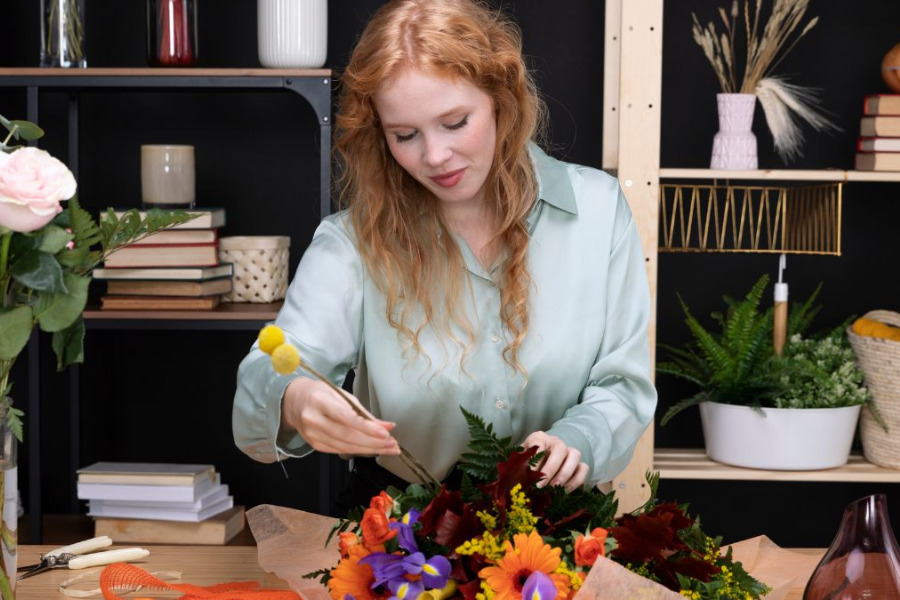
Interior designers often turn to pyntekvister for their understated elegance and organic appeal. These decorative twigs work seamlessly across a wide range of design styles, from Nordic minimalism to rustic farmhouse, Japandi, and even boho interiors.
1. Statement Pieces in Open Spaces
Designers often place tall pyntekvister in oversized ceramic or glass floor vases to make a visual statement in entryways, corners, or beside a reading chair. The vertical lines draw the eye upward and add height to the room without overwhelming it.
2. Layered with Texture
In modern Scandinavian interiors, pyntekvister are layered with soft textures like wool throws, jute rugs, or linen curtains. This contrast between natural hardness and cozy softness helps create visual balance.
3. Part of Seasonal Rotations
Many stylists swap out accessories seasonally while keeping the same core elements, like pyntekvister. With just a few added touches—floral stems in spring, dried oranges in winter—they can transition seamlessly throughout the year.
4. Monochrome and Neutral Color Schemes
Neutral homes benefit from pyntekvister because their earthy tones blend beautifully with beige, gray, white, or soft pastels. Designers favor this look in homes aiming for calm and timeless aesthetics.
5. Minimalist Wall Decor
In smaller apartments or minimalist homes, branches are often mounted directly on the wall or used to hang lightweight artwork or inspirational quotes, offering both function and form.
How to Care for and Preserve Your Pyntekvister
To make the most of your pyntekvister, whether they’re freshly gathered or store-bought, you’ll want to maintain their shape, texture, and visual appeal.
1. Drying Fresh Twigs
If you’re sourcing branches yourself, remove any moisture first:
- Strip leaves or buds
- Place in a dry, well-ventilated area for 1–2 weeks
- Optionally spray with clear sealant to prevent breakage
2. Dusting and Cleaning
Dust gently using a feather duster or soft microfiber cloth. Avoid wet wiping as it can soften or damage the bark.
3. Long-Term Storage
When not in use, store pyntekvister in a tall box or paper wrap, upright and dry. Keep away from heat sources or direct sunlight to prevent warping or fading.
4. Mold Prevention
If used in humid areas (like bathrooms), opt for treated or faux pyntekvister, or ensure proper ventilation to prevent mold growth.
Pairing Pyntekvister with Other Natural Decor Trends
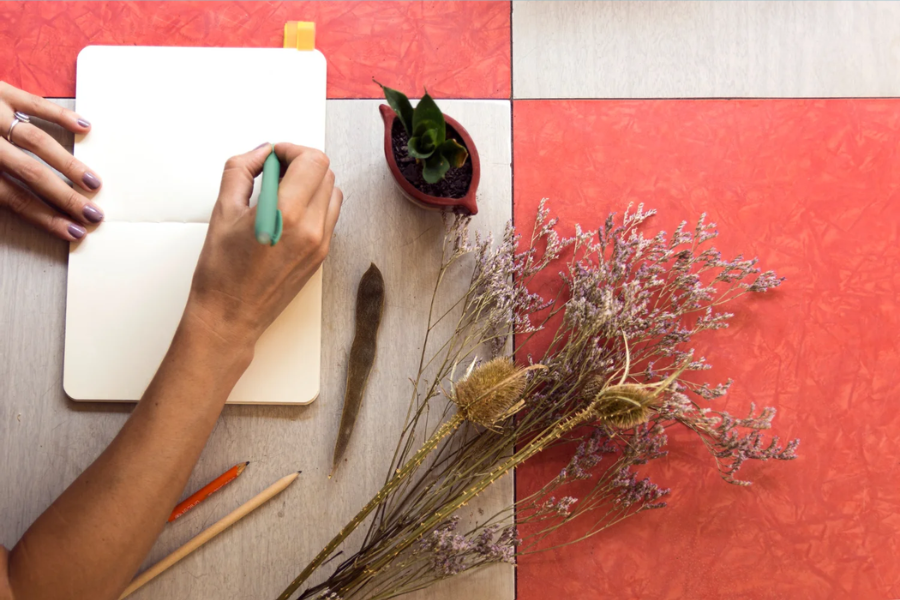
Pyntekvister are not a standalone trend—they fit naturally into a wider movement that celebrates earthy textures, organic shapes, and sustainable living. Here’s how to pair them for a cohesive look:
1. With Dried Flowers
Add pampas grass, wheat stalks, or dried lavender to your pyntekvister arrangement for added texture and a softer visual touch.
2. With Woven Elements
Combine twigs with baskets, rattan chairs, or jute rugs to create a cohesive, earthy vibe that feels both warm and lived-in.
3. With Natural Stone or Clay
Place pyntekvister in stoneware vases or on clay trays to highlight their raw beauty. These materials share the same grounding, rustic appeal.
4. With Candles and Soft Lighting
Use taper candles, lanterns, or LED fairy lights to create a cozy, hygge-inspired setup. The gentle flicker against the branches adds a magical touch.
5. With Textured Walls or Wood Paneling
Incorporating pyntekvister in rooms with wood paneling or plaster-textured walls helps reinforce the natural theme and adds depth to the overall aesthetic.
Where to Buy or Find Pyntekvister – From Nature to Niche Shops
Depending on your location and preference, pyntekvister can be sourced in several different ways:
1. Nature Walks and Foraging
If you live near wooded areas or parks, look for fallen twigs or trim branches mindfully (always check local foraging regulations). Choose dry, firm branches that are bug-free and not too brittle.
2. Home Decor Stores
Scandinavian-inspired brands often carry dried twig arrangements. Look for shops specializing in hygge, wabi-sabi, or rustic decor.
3. Online Marketplaces
Websites like Etsy, Amazon, or specialty decor shops often sell bundled pyntekvister in a variety of styles—natural, dyed, or decorated.
4. Florists and Craft Stores
Florists sometimes carry preserved branches, and craft stores often stock seasonal twigs in various colors and finishes.
Wrapping Up
In a world saturated with digital distractions, overconsumption, and artificial design, pyntekvister bring us back to what truly matters—connection to nature, simplicity, and the calming beauty of organic materials.
These humble decorative twigs carry centuries of tradition, symbolism, and understated charm. Whether you’re decorating a tiny apartment or a spacious countryside home, pyntekvister offer a flexible, affordable, and deeply meaningful way to express your style and values.
Their presence is not loud, but it is lasting. With pyntekvister, you don’t just fill a space—you create atmosphere, emotion, and story.
Frequently Asked Questions About Pyntekvister
Q1: What does the word “pyntekvister” mean?
A: “Pyntekvister” is a Norwegian word that translates to “decorative twigs” or “ornamental branches.” These natural elements are used in home decor to add rustic charm, organic texture, and seasonal flair to interior spaces.
Q2: Are pyntekvister only used in Scandinavian decor?
A: While pyntekvister are rooted in Nordic traditions, their use has expanded globally. From boho to minimalist and rustic styles, they fit beautifully into a variety of decor themes.
Q3: Can I make my own pyntekvister at home?
A: Yes! You can forage twigs from nature (ethically and legally), dry them properly, and decorate them with your choice of lights, ribbons, flowers, or even seasonal accents. It’s a fun and budget-friendly DIY project.
Q4: Are pyntekvister safe for pets and children?
A: Generally, yes—but make sure there are no sharp edges or treated coatings on the branches. Always supervise if used in low areas accessible to children or pets.
Q5: How long do pyntekvister last?
A: When properly dried and stored, pyntekvister can last for years. Preserved or painted ones may last even longer without breaking or fading.
Don’t miss out on any news—keep in touch for real-time information visit: Discover Heading!

